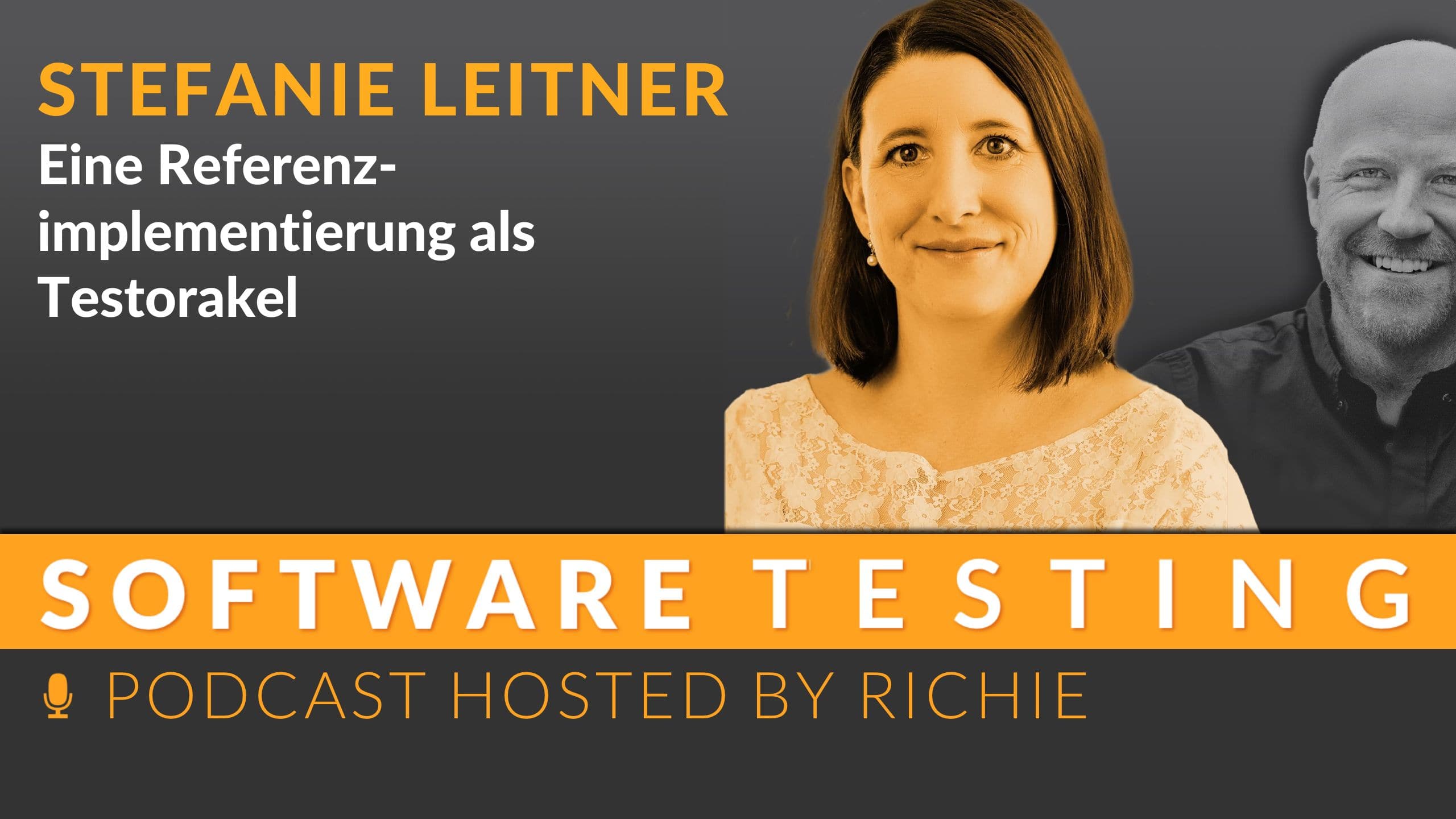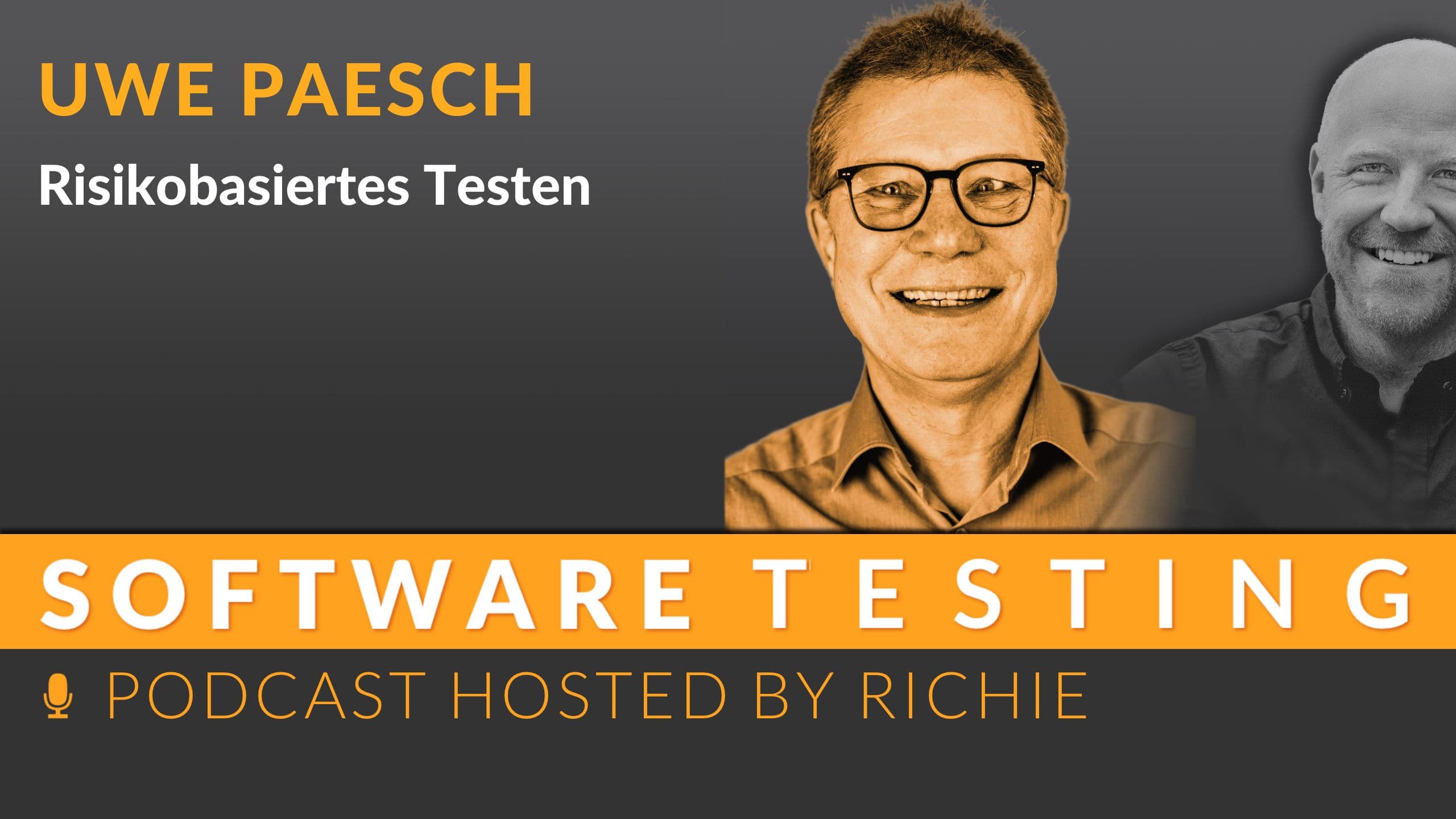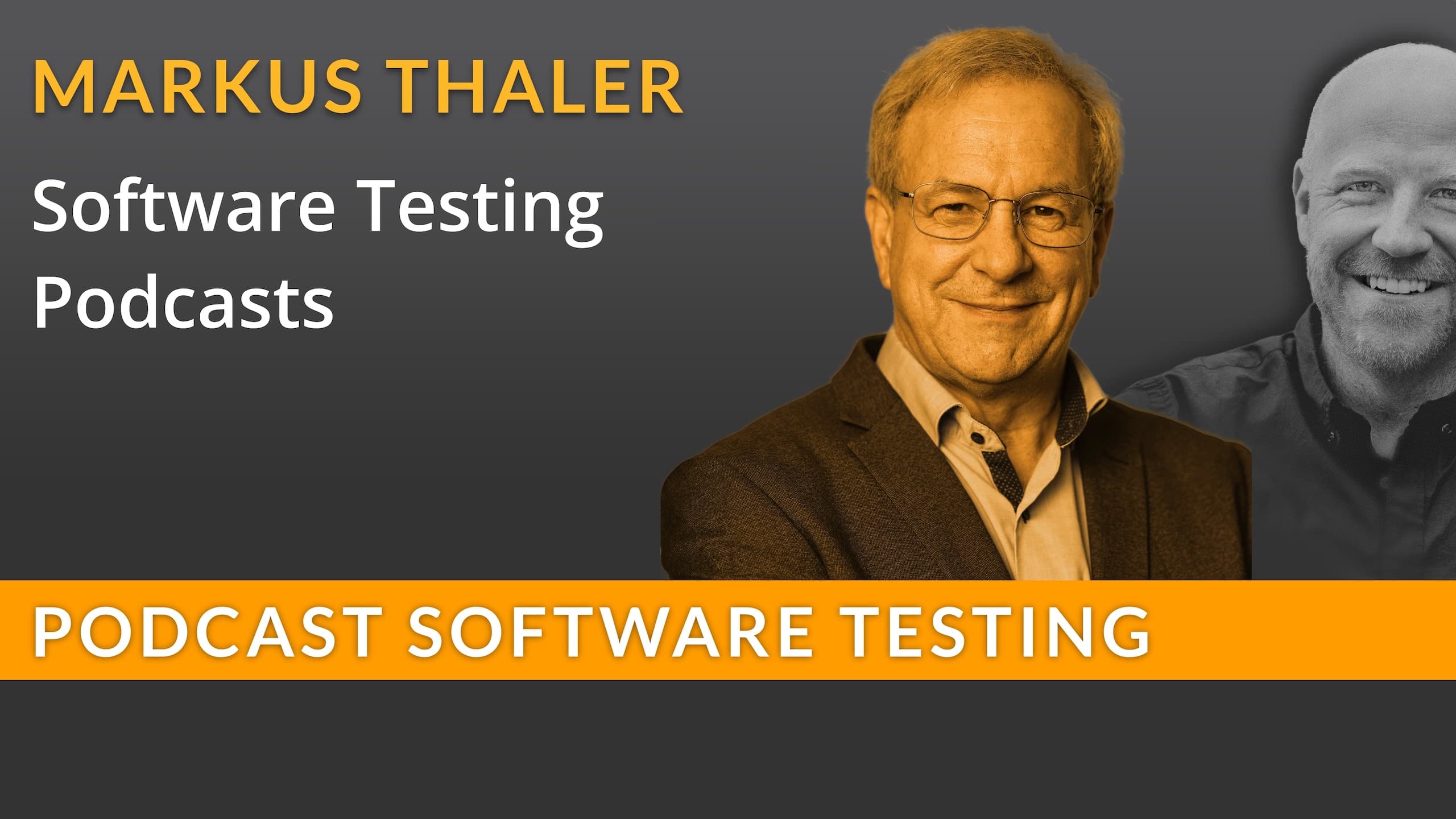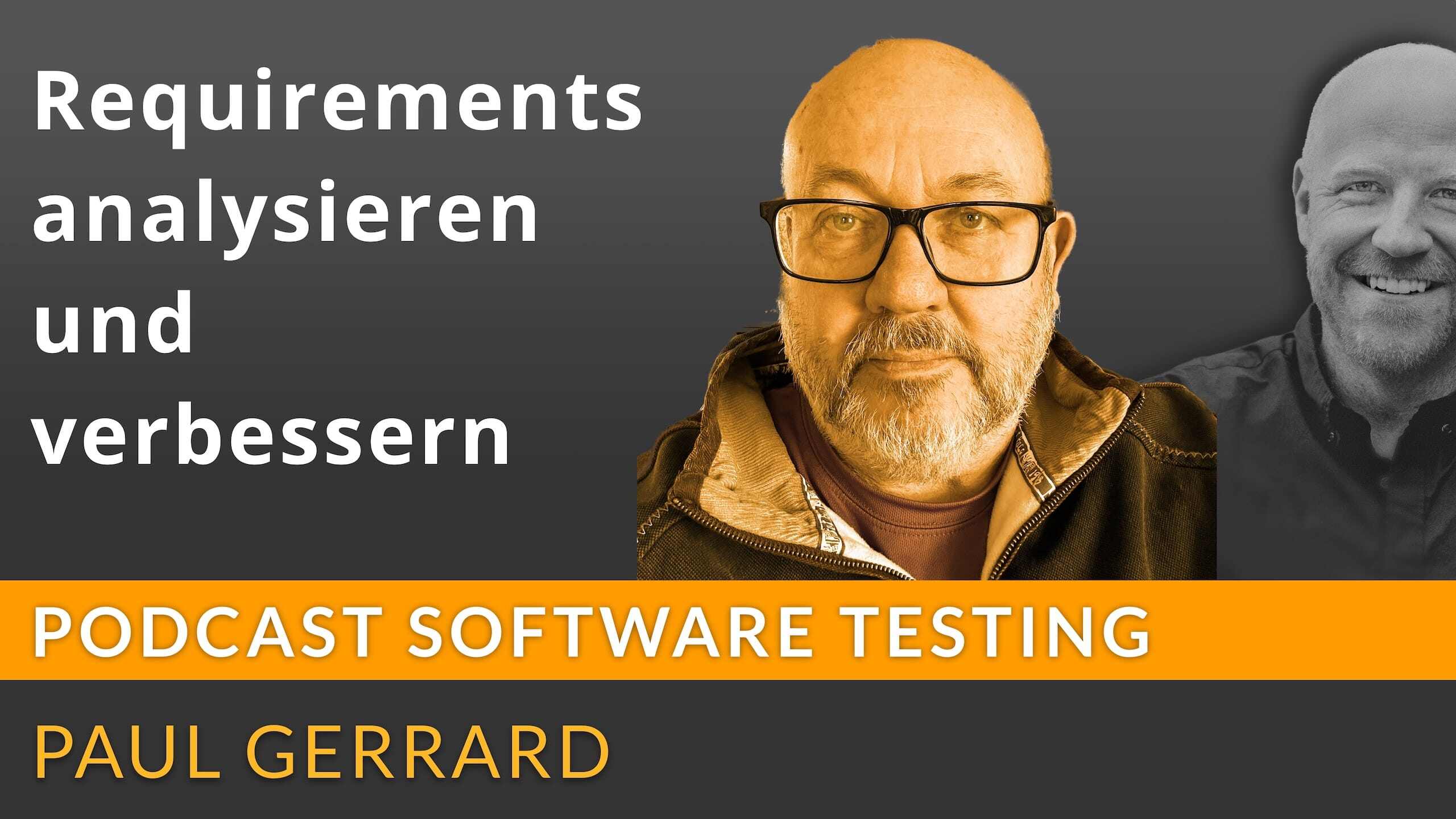Risk based testing
Risk-based testing can help to significantly improve test coverage in software projects and minimize potential risks in testing, especially in the...

Autonomous driving functions and safety-critical systems need to be thoroughly tested in the automotive industry. An efficient way to ensure quality is through a reference implementation: a simplified, standalone version of the software that’s built based on the requirements and kept separate from the developer’s code. In a back-to-back test, both versions are run and their results are compared to systematically identify any differences.
In this episode, I talk with Stefanie Leitner about how software testing works in the automotive industry. Stefanie works at VAIVA, a Volkswagen Group company, and shares how she uses reference implementations to cut down testing effort and saving time and stress along the way.
"If you have to calculate the target values manually for 3000 signals, you have no chance in testing." - Stefanie Leitner
Stefanie Leitner has more than 13 years of experience in automotive testing. Since 2011 she has been working at VAIVA GmbH in various roles such as software tester, test manager or test lead for projects in the field of Advanced Driver Assistance Systems and Active Safety.
Stefanie Leitner is currently responsible for the strategic orientation of testing at VAIVA as Principal Software and System Testing. Her tasks include the implementation of standardized test processes and methods in accordance with ASPICE and ISO26262, as well as the development of new, innovative test methods.
Using a reference implementation as a test oracle is a crucial part of the software test process. This implementation serves as a comparison model for testers to check the correctness and quality of the developer code. By automating test cases using the reference implementation, testers can work more efficiently and detect errors more quickly.
An important aspect in this context is the minimum viable test strategy, which makes it possible to react quickly and effectively to changes in the test process. The development and use of reference implementations play an important role in ensuring the functionality and reliability of software products. In this article, we will dive deeper into the role of reference implementation as a test oracle and take a closer look at its benefits and applications.
The use of a reference model plays a central role in the software test process, especially as a test oracle. A reference model is created by testers independently of the development team and represents the implementation of the requirements in accordance with the specifications. This model is used to automatically calculate and deliver the expected results for various test cases.
Automation of test cases is made considerably easier by reference implementation. Instead of manually determining target values, the reference model enables the automatic generation of target values for each individual test scenario. This not only saves time, but also increases the accuracy of error detection. Each input value runs through both the developer's actual software and the reference model. The output of both systems is systematically compared.
The comparison between the developer code and the reference model takes place at signal level and includes all relevant output values. If the results match, the test case is considered passed. Deviations signal potential errors in the developer implementation, which can then be specifically investigated. The independence of the reference implementation is important here: testers do not have access to the source code of the developer software in order to avoid unintentional adoption of errors or misinterpretations.
This approach allows deep validation of complex algorithms, such as those commonly used in systems for autonomous driving. Such systems require special test strategies and methods for software testing in the automotive industry to ensure that the software works according to the requirements.
The use of a reference model as a test oracle brings significant advantages for quality assurance. The automated execution of tests based on the reference model ensures a comprehensive and consistent appraisal of the software, which largely eliminates manual sources of error. This leads to a significant improvement in quality assurance, as all relevant signals and states are continuously and precisely compared.
The efficiency of error detection and correction increases significantly. As the reference model is created independently of the developer code, discrepancies can be clearly identified. Errors can be detected early on in the test process and addressed in a targeted manner. Feedback to the developers is faster and more substantiated, which facilitates the debugging process.
A decisive aspect is the automation of test procedures. With the reference model, large quantities of test cases can be systematically executed without the need for manual adjustments for each variant. Changes to the requirements can also be efficiently incorporated into the reference model through targeted modifications, which significantly increases productivity in the test process. This structured approach also enables better traceability of requirements through to implementation and their test coverage.
A clear test strategy with defined test levels provides additional structure for tests and helps to test different areas of the software in a targeted manner.
These properties make the reference model an indispensable tool in demanding development environments, especially when complex algorithms and numerous signals need to be tested.
Various aspects play an important role in the implementation of a reference model in software development:
Testers create a reference implementation based on the requirements and the architectural design. This makes it possible to emulate the functionalities of the developer code and use it as a test oracle.
Back-to-back testing compares the reference implementation with the original code to ensure that the software works according to specifications. This helps with error detection and correction in the development process.
Linking requirements to the original code and the reference implementation enables complete traceability. This helps to ensure that all requirements have been implemented correctly and are consistent.
The implementation and use of a reference model as a test oracle therefore plays a crucial role in quality assurance and error prevention throughout the entire software development process.
With the increasing complexity of software systems, the integration of AI into the test process is becoming more and more relevant. AI support enables more efficient analysis of large amounts of data and helps to detect patterns and anomalies that human testers might miss.
The further development of the reference model is crucial in order to meet the constantly changing requirements. Through regular updates and adjustments, the reference model can be kept up to date to ensure an accurate and reliable test environment.
The future of software testing will be heavily influenced by technological advances. The integration of AI and the continuous development of the reference model are crucial to further improve quality assurance in software development and make it more efficient.
Reference implementations as test oracles offer a precise and automated way of ensuring compliance between software and requirements. They enable in-depth testing and efficient error detection through the direct comparison of developer code and reference model. Challenges lie in the trustworthy creation of the reference models and in the required technical qualifications of the testers.
A reference implementation as a test oracle is a reliable reference model that is used in the software test process to verify the correctness of developer code through automated test cases and to identify errors.
The reference implementation serves as a test oracle that automatically executes test cases and compares the developer code with the reference model in order to detect deviations and improve quality assurance.
The use of a reference model enables automated error detection, increases efficiency in error correction and increases overall productivity through optimized test procedures.
The reference model is used in software development for code review, supports traceability between requirements and implementation and acts as a test oracle to ensure software quality.
Future developments include the integration of AI support to optimize test techniques and the further development of the reference model to meet current and future requirements in software testing.
AI and new technologies enable improved automation and optimization of the test process, strengthening the role of reference implementations as a test oracle and making quality assurance more efficient.

Risk-based testing can help to significantly improve test coverage in software projects and minimize potential risks in testing, especially in the...

Podcasts for testers provide an innovative platform to effectively reach target audiences and shed light on the motivation behind the creation of...

Podcast Episode: Analyze and improve requirements In this episode, I speak with Paul Gerrard, a veteran of software testing with over 30 years of...